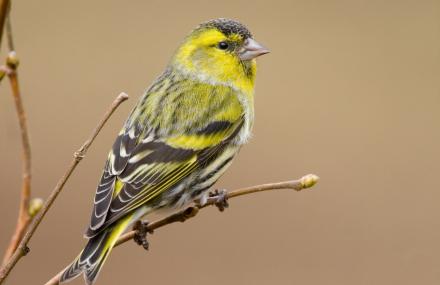The Siskin is a relatively common, small finch of conifer woodlands and some mixed woods. In the winter, they gather in groups with Redpolls and feed on seeds in birch and alder woodland, as well as at birdtables. Many of our breeding Siskins are residents, but are joined by birds from Europe in winter. The female Siskin builds her neat nest high-up in a conifer tree, using twigs, lichen and feathers. She incubates the eggs alone (usually two to six in a clutch) but both parents feed the chicks.
You can help to look after Siskins and other garden birds by providing food and water for them - it doesn't matter if you have a big garden or live in a high-rise flat, there are plenty of feeders, baths and food choices out there to suit all kinds of situations. To find out more about encouraging wildlife into your garden, visit our Wild About Gardens website: a joint initiative with the RHS, there's plenty of facts and tips to get you started. To buy bird food or feeders, visit the Vine House Farm website - an award-winning wildlife-friendly farm which gives 5% of all its takings to The Wildlife Trusts.
